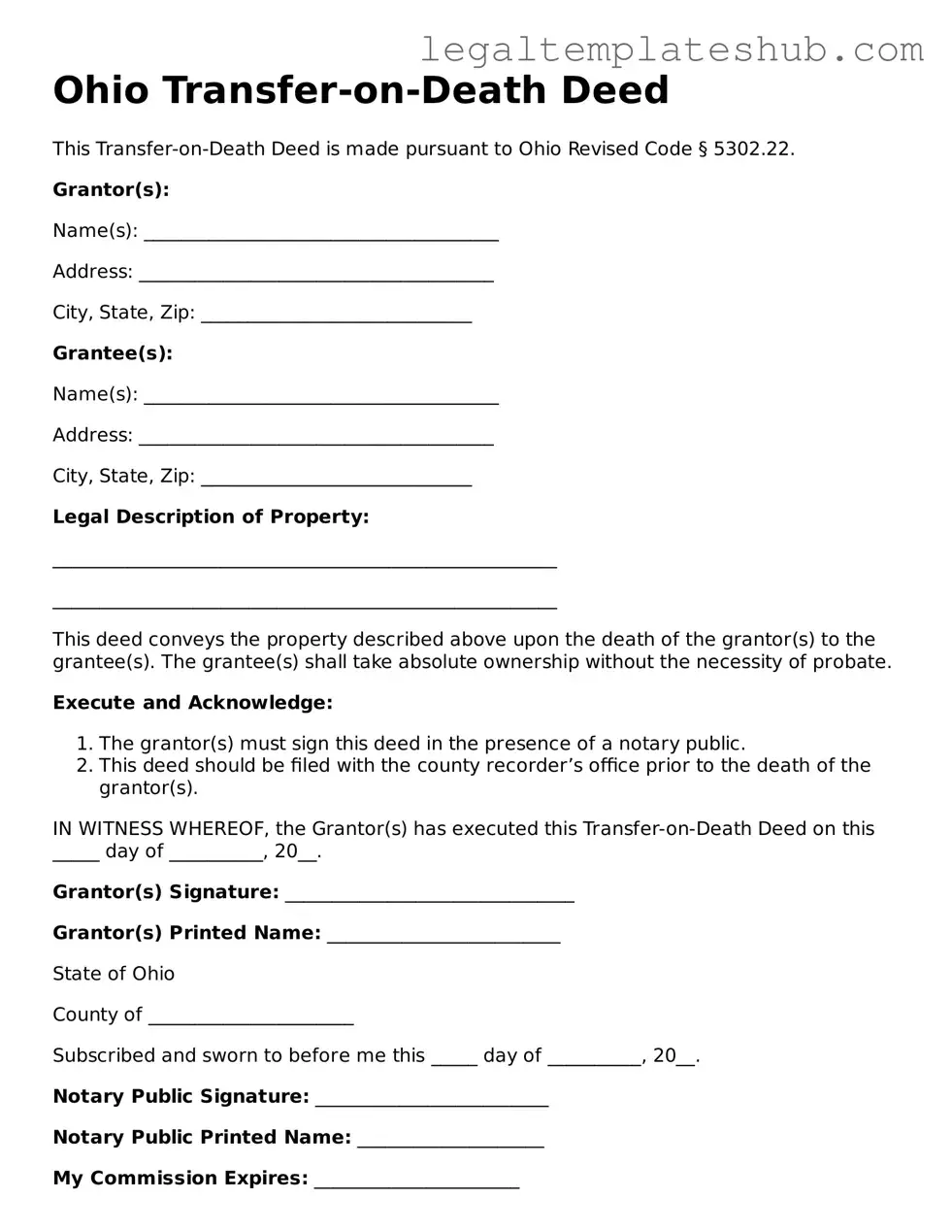Printable Transfer-on-Death Deed Document for Ohio
The Ohio Transfer-on-Death Deed is a legal document that allows property owners to transfer their real estate to designated beneficiaries upon their death, bypassing the probate process. This deed provides a straightforward way to ensure that property is passed on according to the owner's wishes. For those interested in utilizing this form, please consider filling it out by clicking the button below.
Access Editor
